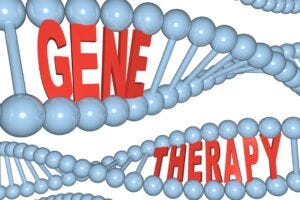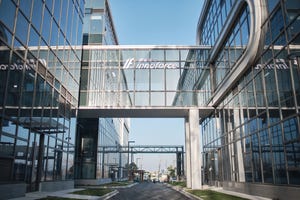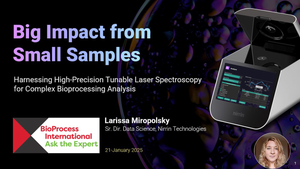
The US approval of bluebird bio’s Skysona (eli-cel) marks a resurgence for the wider hematopoietic stem cell (HSC) gene therapy sector, says AVROBIO.
Following the endorsement by an Advisory Committee in June, the US Food and Drug Administration (FDA) granted approval of bluebird bio’s Skysona (elivaldogene autotemcel, or eli-cel) Friday for the treatment of active cerebral adrenoleukodystrophy (CALD).
Skysona uses ex vivo transduction with a Lenti-D lentiviral vector (LVV) to add functional copies of the ABCD1 gene into a patient’s own hematopoietic stem cells (HSCs) and becomes the second one-time gene therapy to be approved for bluebird within weeks after the FDA gave the thumbs up for Zynteglo (beti-cel) for the treatment of beta-thalassemia in August.

Image: DepositPhotos/
iqoncept
Skysona’s $3 million wholesale acquisition cost nudges Zynteglo into second place for the world’s most expensive drug, but beyond potential financial benefits for bluebird, the approval marks a turnaround for the once-beleaguered gene therapy sector.
“Gene therapy is having a resurgence – there was a long drought where we didn’t have any gene therapy approvals,” Geoff MacKay, CEO of fellow HSC gene therapy company AVROBIO, told BioProcess Insider.
With the two bluebird approvals, BioMarin’s hemophila A approval in Europe back in June, and PTC Therapeutics’ European marketing authorization for its AADC gene therapy Upstaza (eladocagene exuparvovec) in July, it is “exciting to now see momentum building,” he said.
Furthermore, he cited strong clinical data from the likes Sarepta, with its Duchenne Muscular Dystrophy candidate, and Regenxbio with its Hunter Syndrome product as evidence of the strong pipeline of gene therapies coming through the clinic.
“This resurgence is built on real data, real regulatory milestones, real changed patient lives, not hype. I believe it’s the real forward progress we need to build toward true change in how genetic diseases are treated. Change that untethers patients from a lifetime of chronic treatments and delivers a potential functional cure with a single dose. That is an exciting prospect for all of us – and, of course, for the millions of patients and families living with genetic diseases worldwide.”
Money, safety, and manufacturing
This latest approval will drive confidence in the sector, MacKay added.
“It’s clear that regulatory bodies are rewarding good work, and the more gene therapy development becomes a well-traveled and validated path, the more it will facilitate gene therapy development and investment. While gene therapy stocks have not necessarily reacted to the recent approvals, I expect that will eventually change.”
However, the gene therapy floodgates are still being obstructed by several factors, including clear regulatory pathways and strong clinical data, he admitted. Safety profile is also a restricting factor, he said, noting eli-cel’s safety risk record, which saw the therapy directly linked to two patients who developed a bone marrow cancer many months after treatment.
However, “it’s important to keep in mind this gene therapy for CALD, and the risk-benefit factors associated with it, is not representative of the gene therapy field,” he said. “Not all vectors are the same. To date, there have been zero cases of insertional oncogenesis with lentiviral vectors outside of bluebird bio’s CALD program.
“Importantly, new tools and analytics have been developed in the last few years to assess and enhance vector safety, and we embrace those at AVROBIO. In our clinical programs, AVROBIO uses a different lentiviral vector, different promoter, different transgene/recombinant protein and different manufacturing process. To date, we have seen no cases of insertional oncogenesis in our clinical programs.”
As such, robust CMC analytics and safety are key for continued success in the gene therapy field, he continued, adding a robust manufacturing process that is scalable is also critical for any company nearing commercial stage.
“It’s not easy to manufacture cell and gene therapies, and it’s even tougher to manufacture them at commercial scale. So, it’s critical that companies develop sound processes, secure their supply chains and build manufacturing systems that will enable them to reach a broad – often global – market once they have secured regulatory approval. That requires consistent innovation – for example, AVROBIO has created a manufacturing platform, that we call plato, that can scale to produce high-performing vectors for clinical trials and at commercial scale.”
About the Author
You May Also Like

schedl_b_and_w.jpg?width=100&auto=webp&quality=80&disable=upscale)
schedl_b_and_w.jpg?width=400&auto=webp&quality=80&disable=upscale)





